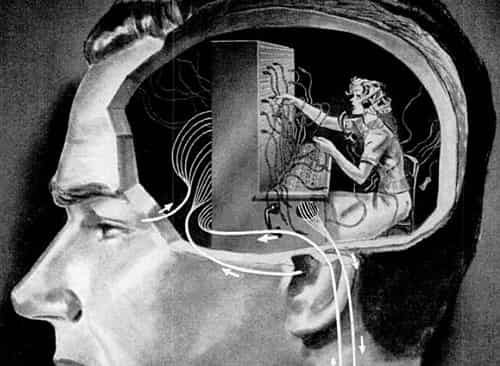Five Simple Ericksonian Hypnosis Techniques in Conversation
The founder of Ericksonian hypnosis is the famous psychotherapist Milton Erickson, who from a young age, after suffering from polio, was bedridden and by self-hypnosis achieved an improvement in his condition until complete recovery.
Ericksonian psychotherapy is a way of providing access to a person's inner resources, which are necessary to resolve the psychological problems he has, to eliminate painful symptoms. Its most important component is Ericksonian hypnosis - a non-directive-permissive, flexible, indirect model of guidance and use of hypnotic trance, based on cooperation and multi-level interpersonal interaction between the therapist and the client.
Ericksonian model of psychotherapy involves the widespread use of multilevel speech. Verbal formulation can contain many meanings. Thus, at the conscious level, only one of the possible meanings of a word is processed, and at the unconscious level, all its meanings are processed.
Ericksonian hypnosis techniques can be useful for psychologists and psychotherapists in working with clients in order to improve their psycho-emotional state. They can also be useful for improving the quality of communication. However, the undoubted principle when applying them is the principle: "Do no harm".
Ericksonian hypnosis techniques are actively used by gypsies, networkers, sales consultants. Knowing the techniques of Ericksonian hypnosis, you can notice manipulation by other people and resist them.
Ericksonian hypnosis consists of the following sequence of steps:
1. Joining is an adjustment:
a) under the timbre, the rate of speech of the interlocutor, the use of his speech predicates (visual, auditory, kinesthetic)
- visual predicates - the words "see", "bright", "hazy", "distinctly", "perspective", etc.
- auditory predicates - the words “hear”, “sound”, “creak”, “shout”, “deafen”, etc.,
- kinesthetic - “feel”, “touch”, “warm”, “heavy”, “rough”, “hard” or “smell”, “tasty”, “stale”, “aromatic”, etc.
b) under the posture, movements - by copying the posture and movements of the interlocutor, you evoke a feeling of sympathy in him, subconsciously, the opponent begins to trust you and open up in a conversation. It is necessary to ensure that this kind of adjustment occurs smoothly, unnoticed by the opponent, otherwise he may think that you are imitating him, which can affect the communication process in the opposite way. For example, if the interlocutor shakes his leg while sitting, you can tap your fingers on the table in time.
Adjustment masters not only adhere to the position of the interlocutor's body, but also adjust the pace of their breathing, blinking their eyes and other micromovements of the opponent.
2. Maintaining - as the report is established (adjustment) and the interlocutor's disposition to oneself, the introduction of one's own predicates, timbre and tempo of speech, a gradual change and transition to a more positive and resourceful position.
For example, when speaking to a person who is in an irritated state, adjust to their anger, but at a slightly weaker level. Because if you go too far, there is a danger of exacerbation. Once you have adjusted, you can begin to lead him gradually down to a calmer state, gradually calming his own behavior. Someone who insists on something can be joined and tuned in by voice, speaking a little louder and faster than usual.
3. Induction of trance. Trance is an altered state of consciousness in which critical perception of information ceases and the ability to consistently analyze and comprehend decreases. Many people are afraid of the word "trance", associating it with cruel manipulation and associated with the action of various sects. However, in just one day, a person can experience a state of trance several times, for example, taking a shower, listening to music or getting to work by public transport.
Techniques for inducing a trance in a conversation:
Technique of three "YES"
First, say a few statements with which the person agrees, and then your proposal, for example:
"Now you are reading my article, and you are thinking about how you can use all this in practice, and you feel some confusion about it, and you also think that not everything is clear, and perhaps you will read this article to the end . "
In this technique, your speech must be built in the present moment. The first phrases and words plunge a person into a trance, and the last sentence takes him by surprise. He becomes, as it were, forced to fulfill it.
Chatting
Using this technique, you talk a lot, often jumping from one question to another. Constantly keep the mind of the interlocutor connected by asking the questions "do you understand, right?", "Isn't it right, isn't it?" And when your opponent's head is literally spinning, complete your suggestion with the sentence you came with. Often people do it so that it doesn't repeat itself from the beginning.
For example: while studying psychology, I began to understand that I do not understand a lot in people, but I just cannot understand what exactly from what I did not understand I still understand, and I probably will never understand the difference between what I have already understood and what I don't understand.
Triple helix of milton erickson
The Triple Helix is made up of three unrelated little stories. And in practice it looks like this:
You begin to tell the first story, and at the moment when you come to the most interesting, without any connection, you move on to the second story.
You tell the second story again until the climax and again, without a bunch, move on.
The third story should contain the actual text of the suggestion, preferably if it is composed using the techniques of manipulation of consciousness, which are still to be discussed. So, you recite the third story, containing the text of the suggestion, and without interruption, you return to the second story, completing it.
After that, you end the first story, from the place where you interrupted it.
Pay attention to the details, everything is important here. If you simply, haphazardly jump from one to another - this is not a triple helix - this is chattering. If you make long pauses between stories - this is not a spiral - these are five, in an incomprehensible way, related sayings, of course the effect will be, if only because you cause confusion in your interlocutor - he probably has not heard this before , so use confusion for their own good.
Suggestion
There are also several speech techniques here:
Truisms
Truism is the most obvious statement, it can be: a statement that is in strict accordance with reality, a trivial truth.
If in the course of a conversation you say: "... sometimes people make decisions influenced by feelings ...", "... people often feel relief after talking about it with someone ...",
Trance induction truism "Everyone goes into a trance in their own way."
A truism to create a learning mindset "Experience is a great teacher."
Forgetting truism: "People can forget what they know."
Assumptions
In this technique, the assumption is made that a certain behavioral response occurs. These sentences are built using turns of speech, which indicate a time or sequence of actions.
Typical turns of speech used in this technique:
before ... after ... during ... as ... before ... when ... while ...
For example: "Take a deep breath before letting me know what problem you want to work on."
Contrasts
Two behavioral responses are discussed here that can be contrasted. The effectiveness of the technique can be enhanced by using kinesthetics, thus a person is convinced of the presence of opposites.
For example: "The more you try to resist, the sooner you will realize that it is in vain."
"The harder the problem seems, the easier it turns out to be a suitable solution."
"The harder it is for you to study this course, the easier it will be to apply it in practice."
Choice without choice
In this technique, you are given a choice of several options, both of which would suit you.
For example, "You will be able to apply the knowledge gained immediately or after a little training."
The right to choose
The main condition for the success of this technique is the placement of intonation accents when drawing the interlocutor's attention to the reaction that you want to evoke from him, while offering freedom of choice. However, the other person feels relaxed and does not feel obligated to follow your recommendations. The important point will not be the information itself, but how you offer it. In this case, the option that does not suit you, you pronounce in a somewhat dismissive tone.
For example, "You can read this article right now, or not read it at all."
5. The withdrawal from the trance will occur immediately after the end of the conversation . However, for a softer withdrawal from trance, you can return a person to reality. For example, after a psychotherapy session, you can offer to pay attention to the client's environment, ask him about his health.
Thus, the techniques of Ericksonian hypnosis are effective and efficient in the process of communication between people, however, I would like to note that it is not worth using it for direct suggestion or changing the personality of another person, since this approach is usually useless or leads to a short-term result. It will be more effective to use it to assimilate skills and induce the client to naturally desired personal changes that arise as a result of not hypnosis itself, but the learning process.




